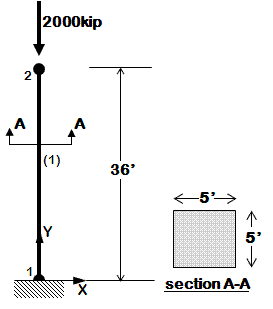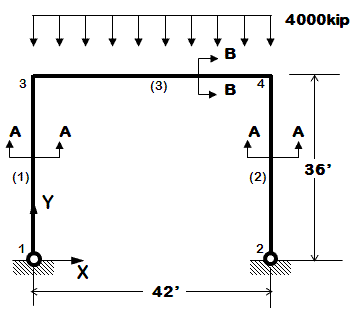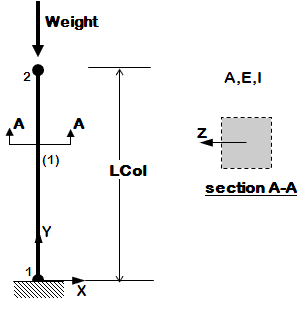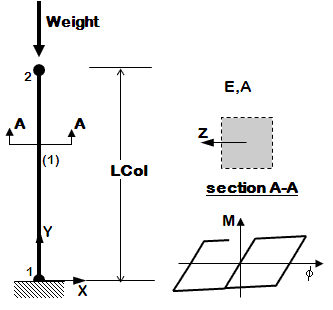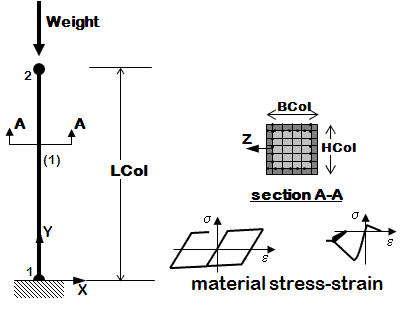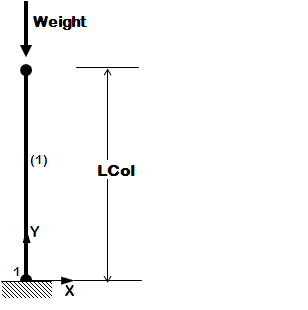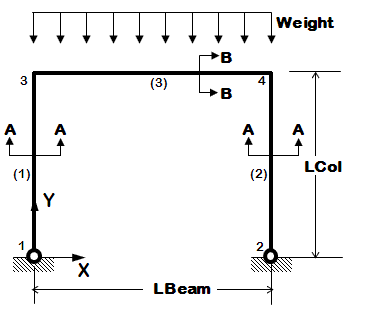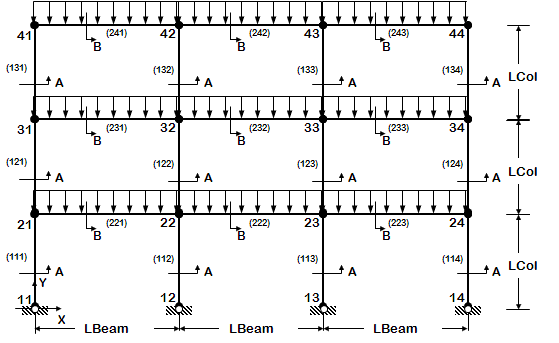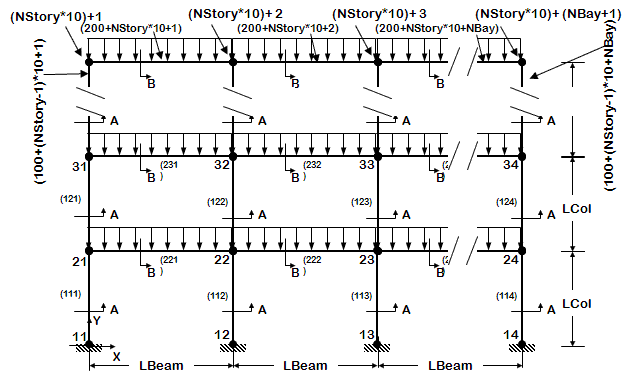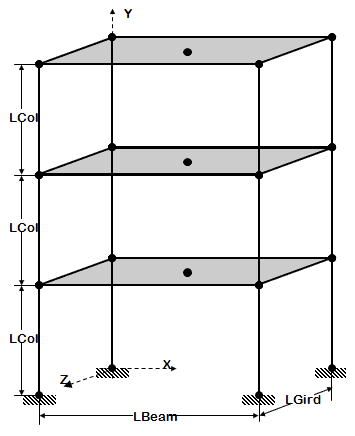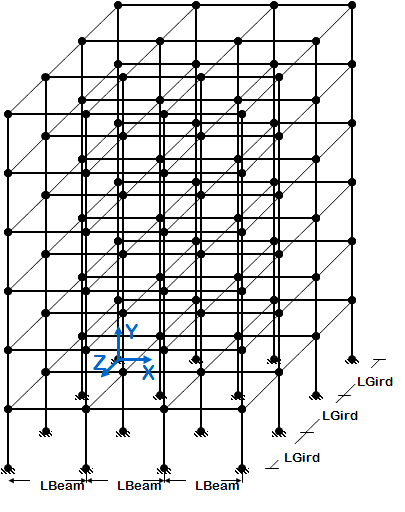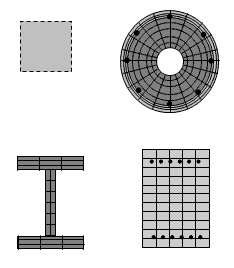OpenSees Examples Manual -- Structural Models & Anlyses: Difference between revisions
Jump to navigation
Jump to search
No edit summary |
No edit summary |
||
| Line 7: | Line 7: | ||
{| style="width:100%; vertical-align:top; border:1px solid #black; background:#white;" | {| style="width:100%; vertical-align:top; border:1px solid #black; background:#white;" | ||
! style="padding:2px" | <h1 style="margin:3px; background:white; font-size:120%; font-weight:bold; border:1px solid #black; text-align:left; color:#000; padding:0.2em 0.4em;"> | ! style="padding:2px" | <h1 style="margin:3px; background:white; font-size:120%; font-weight:bold; border:1px solid #black; text-align:left; color:#000; padding:0.2em 0.4em;"> | ||
<big><big>Introduction</big></big></h1> | <big><big>Introduction<</big></big></h1> | ||
|- | |- | ||
| style="color:#000;" | <div> | | style="color:#000;" | <div> | ||
| Line 18: | Line 18: | ||
{| style="width:100%; vertical-align:top; border:1px solid #black; background:#white;" | {| style="width:100%; vertical-align:top; border:1px solid #black; background:#white;" | ||
! style="padding:2px" | <h1 style="margin:3px; background:white; font-size:120%; font-weight:bold; border:1px solid #black; text-align:left; color:#000; padding:0.2em 0.4em;"> | ! style="padding:2px" | <h1 style="margin:3px; background:white; font-size:120%; font-weight:bold; border:1px solid #black; text-align:left; color:#000; padding:0.2em 0.4em;"> | ||
<big><big>[[OpenSees Examples -- Introductory Examples]]</big></big></h1> | <big><big>[[OpenSees Examples -- Introductory Examples]]<</big></big></h1> | ||
<!-- subSECTION 1 --> | <!-- subSECTION 1 --> | ||
|- | |- | ||
| style="color:#000;" | <div> | | style="color:#000;" | <div> | ||
<big>[[OpenSees Example 1a. 2D Elastic Cantilever Column ]]</big> | <big><strong>[[OpenSees Example 1a. 2D Elastic Cantilever Column ]]</strong></big> | ||
</div> | </div> | ||
|} | |} | ||
| Line 74: | Line 74: | ||
|- | |- | ||
| style="color:#000;" | <div> | | style="color:#000;" | <div> | ||
<big>[[OpenSees Example 1b. Elastic Portal Frame]]</big> | <big><strong>[[OpenSees Example 1b. Elastic Portal Frame]]</strong></big> | ||
</div> | </div> | ||
|} | |} | ||
| Line 121: | Line 121: | ||
{| style="width:100%; vertical-align:top; border:1px solid #black; background:#white;" | {| style="width:100%; vertical-align:top; border:1px solid #black; background:#white;" | ||
! style="padding:2px" | <h1 style="margin:3px; background:white; font-size:120%; font-weight:bold; border:1px solid #black; text-align:left; color:#000; padding:0.2em 0.4em;"> | ! style="padding:2px" | <h1 style="margin:3px; background:white; font-size:120%; font-weight:bold; border:1px solid #black; text-align:left; color:#000; padding:0.2em 0.4em;"> | ||
<big><big>[[OpenSees Examples -- Simple Nonlinear Analysis Examples]]</big></big></h1> | <big><big>[[OpenSees Examples -- Simple Nonlinear Analysis Examples]]<</big></big></h1> | ||
<!-- subSECTION 1 --> | <!-- subSECTION 1 --> | ||
|- | |- | ||
| style="color:#000;" | <div> | | style="color:#000;" | <div> | ||
<big>[[OpenSees Example 2a. Elastic Cantilever Column with variables]]</big> | <big><strong>[[OpenSees Example 2a. Elastic Cantilever Column with variables]]</strong></big> | ||
</div> | </div> | ||
|} | |} | ||
| Line 174: | Line 174: | ||
|- | |- | ||
| style="color:#000;" | <div> | | style="color:#000;" | <div> | ||
<big>[[OpenSees Example 2b. Nonlinear Cantilever Column: Uniaxial Inelastic Section]]</big> | <big><strong>[[OpenSees Example 2b. Nonlinear Cantilever Column: Uniaxial Inelastic Section]]</strong></big> | ||
</div> | </div> | ||
|} | |} | ||
| Line 224: | Line 224: | ||
|- | |- | ||
| style="color:#000;" | <div> | | style="color:#000;" | <div> | ||
<big>[[OpenSees Example 2c. Nonlinear Cantilever Column: Inelastic Uniaxial Materials in Fiber Section ]]</big> | <big><strong>[[OpenSees Example 2c. Nonlinear Cantilever Column: Inelastic Uniaxial Materials in Fiber Section ]]</strong></big> | ||
</div> | </div> | ||
|} | |} | ||
| Line 274: | Line 274: | ||
{| style="width:100%; vertical-align:top; border:1px solid #black; background:#white;" | {| style="width:100%; vertical-align:top; border:1px solid #black; background:#white;" | ||
! style="padding:2px" | <h1 style="margin:3px; background:white; font-size:120%; font-weight:bold; border:1px solid #black; text-align:left; color:#000; padding:0.2em 0.4em;"> | ! style="padding:2px" | <h1 style="margin:3px; background:white; font-size:120%; font-weight:bold; border:1px solid #black; text-align:left; color:#000; padding:0.2em 0.4em;"> | ||
<big><big>[[OpenSees Examples -- 2D Structural Modelling & Analysis Examples]]</big></big></h1> | <big><big>[[OpenSees Examples -- 2D Structural Modelling & Analysis Examples]]<</big></big></h1> | ||
<!-- subSECTION 1 --> | <!-- subSECTION 1 --> | ||
|- | |- | ||
| style="color:#000;" | <div> | | style="color:#000;" | <div> | ||
<big>[[OpenSees Example 3. Cantilever Column with units]]</big> | <big><strong>[[OpenSees Example 3. Cantilever Column with units]]</strong></big> | ||
</div> | </div> | ||
|} | |} | ||
| Line 332: | Line 332: | ||
|- | |- | ||
| style="color:#000;" | <div> | | style="color:#000;" | <div> | ||
<big>[[OpenSees Example 4. Portal Frame]]</big> | <big><strong>[[OpenSees Example 4. Portal Frame]]</strong></big> | ||
</div> | </div> | ||
|} | |} | ||
| Line 389: | Line 389: | ||
|- | |- | ||
| style="color:#000;" | <div> | | style="color:#000;" | <div> | ||
<big>[[OpenSees Example 5. 2D Frame, 3-story 3-bay, Reinforced-Concrete Section & Steel W-Section]]</big> | <big><strong>[[OpenSees Example 5. 2D Frame, 3-story 3-bay, Reinforced-Concrete Section & Steel W-Section]]</strong></big> | ||
</div> | </div> | ||
|} | |} | ||
| Line 447: | Line 447: | ||
|- | |- | ||
| style="color:#000;" | <div> | | style="color:#000;" | <div> | ||
<big>[[OpenSees Example 6. generic 2D Frame, N-story N-bay, Reinforced-Concrete Section & Steel W-Section]]</big> | <big><strong>[[OpenSees Example 6. generic 2D Frame, N-story N-bay, Reinforced-Concrete Section & Steel W-Section]]</strong></big> | ||
</div> | </div> | ||
|} | |} | ||
| Line 503: | Line 503: | ||
{| style="width:100%; vertical-align:top; border:1px solid #black; background:#white;" | {| style="width:100%; vertical-align:top; border:1px solid #black; background:#white;" | ||
! style="padding:2px" | <h1 style="margin:3px; background:white; font-size:120%; font-weight:bold; border:1px solid #black; text-align:left; color:#000; padding:0.2em 0.4em;"> | ! style="padding:2px" | <h1 style="margin:3px; background:white; font-size:120%; font-weight:bold; border:1px solid #black; text-align:left; color:#000; padding:0.2em 0.4em;"> | ||
<big><big>[[OpenSees Examples -- 3D Structural Modelling & Analysis Examples]]</big></big></h1> | <big><big>[[OpenSees Examples -- 3D Structural Modelling & Analysis Examples]]<</big></big></h1> | ||
<!-- subSECTION 1 --> | <!-- subSECTION 1 --> | ||
|- | |- | ||
| style="color:#000;" | <div> | | style="color:#000;" | <div> | ||
<big>[[OpenSees Example 7. 3D Frame, 3-story 3-bayX 3-bayZ, Reinforced-Concrete Section & Steel W-Section]]</big> | <big><strong>[[OpenSees Example 7. 3D Frame, 3-story 3-bayX 3-bayZ, Reinforced-Concrete Section & Steel W-Section]]</strong></big> | ||
</div> | </div> | ||
|} | |} | ||
| Line 566: | Line 566: | ||
|- | |- | ||
| style="color:#000;" | <div> | | style="color:#000;" | <div> | ||
<big>[[OpenSees Example 8. generic 3D Frame, NStory NBayX NBayZ, Reinforced-Concrete Section & Steel W-Section]]</big> | <big><strong>[[OpenSees Example 8. generic 3D Frame, NStory NBayX NBayZ, Reinforced-Concrete Section & Steel W-Section]]</strong></big> | ||
</div> | </div> | ||
|} | |} | ||
| Line 626: | Line 626: | ||
{| style="width:100%; vertical-align:top; border:1px solid #black; background:#white;" | {| style="width:100%; vertical-align:top; border:1px solid #black; background:#white;" | ||
! style="padding:2px" | <h1 style="margin:3px; background:white; font-size:120%; font-weight:bold; border:1px solid #black; text-align:left; color:#000; padding:0.2em 0.4em;"> | ! style="padding:2px" | <h1 style="margin:3px; background:white; font-size:120%; font-weight:bold; border:1px solid #black; text-align:left; color:#000; padding:0.2em 0.4em;"> | ||
<big><big>[[OpenSees Examples -- Section Modelling And Analysis Examples]]</big></big></h1> | <big><big>[[OpenSees Examples -- Section Modelling And Analysis Examples]]<</big></big></h1> | ||
<!-- subSECTION 1 --> | <!-- subSECTION 1 --> | ||
|- | |- | ||
| style="color:#000;" | <div> | | style="color:#000;" | <div> | ||
<big>[[OpenSees Example 9. Build & Analyze a Section Example]]</big> | <big><strong>[[OpenSees Example 9. Build & Analyze a Section Example]]</strong></big> | ||
</div> | </div> | ||
|} | |} | ||
Revision as of 03:56, 10 November 2009
Introduction< |
|---|
The following examples are listed in order of simplicity. NOTE: gravity analysis is always included as part of the model building |
OpenSees Examples -- Introductory Examples< |
|---|
|
|
|
|
|
|
|
|
|
|
OpenSees Examples -- Simple Nonlinear Analysis Examples< |
|---|
|
|
|
|
|
|
|
|
|
|
|
|
|
|
|
OpenSees Examples -- 2D Structural Modelling & Analysis Examples< |
|---|
|
|
|
|
|
|
|
|
|
|
|
|
|
|
|
|
|
|
|
|
OpenSees Examples -- 3D Structural Modelling & Analysis Examples< |
|---|
|
|
|
|
|
|
|
|
|
|
OpenSees Examples -- Section Modelling And Analysis Examples< |
|---|
|
|
|
|
|
Return to OpenSees User
